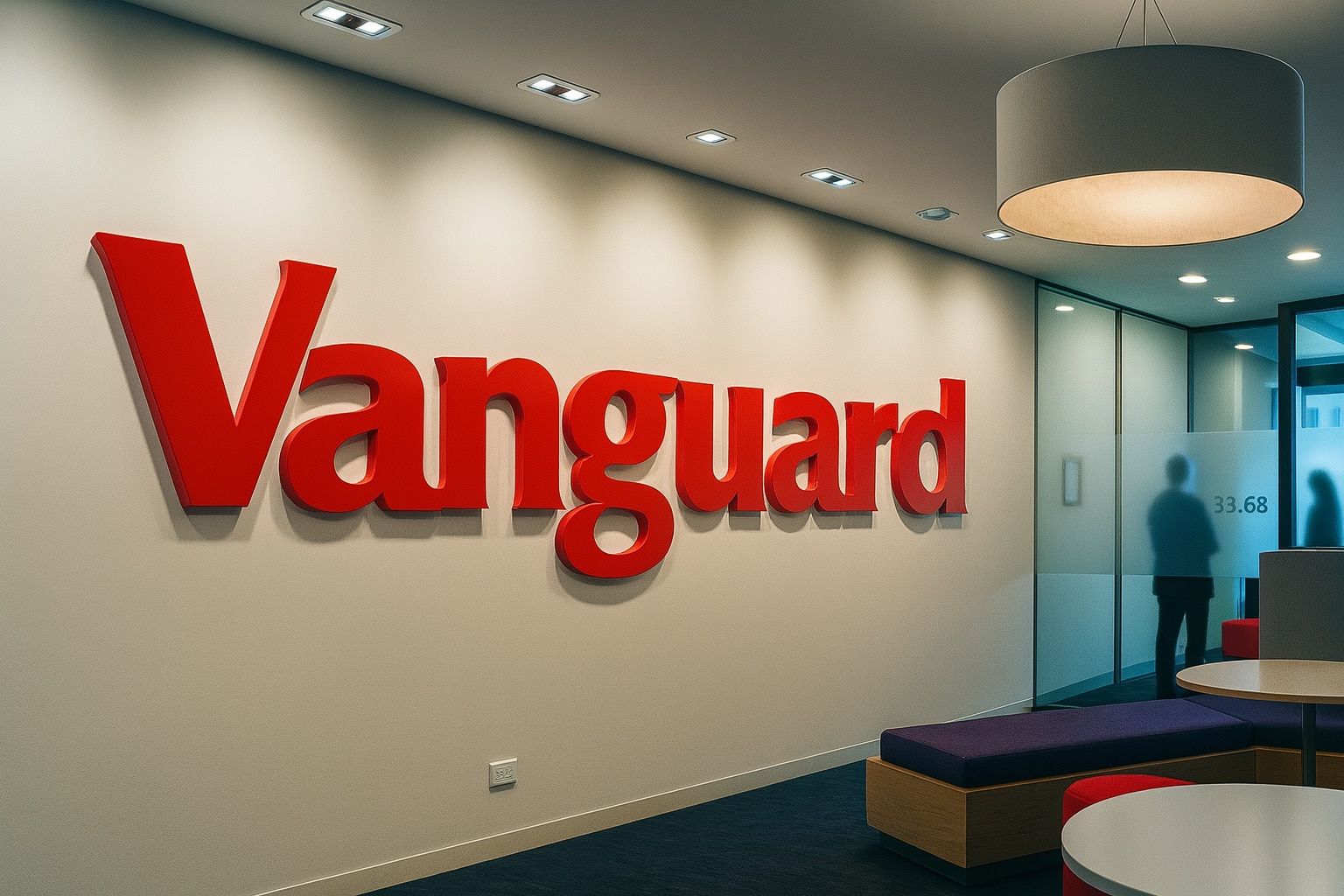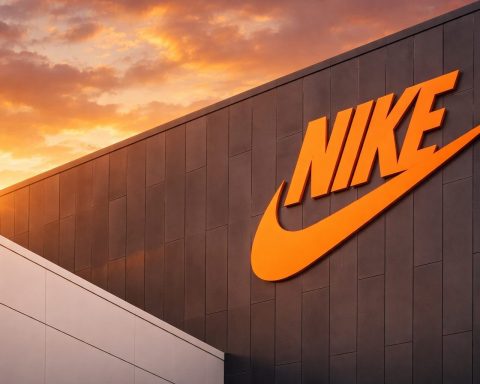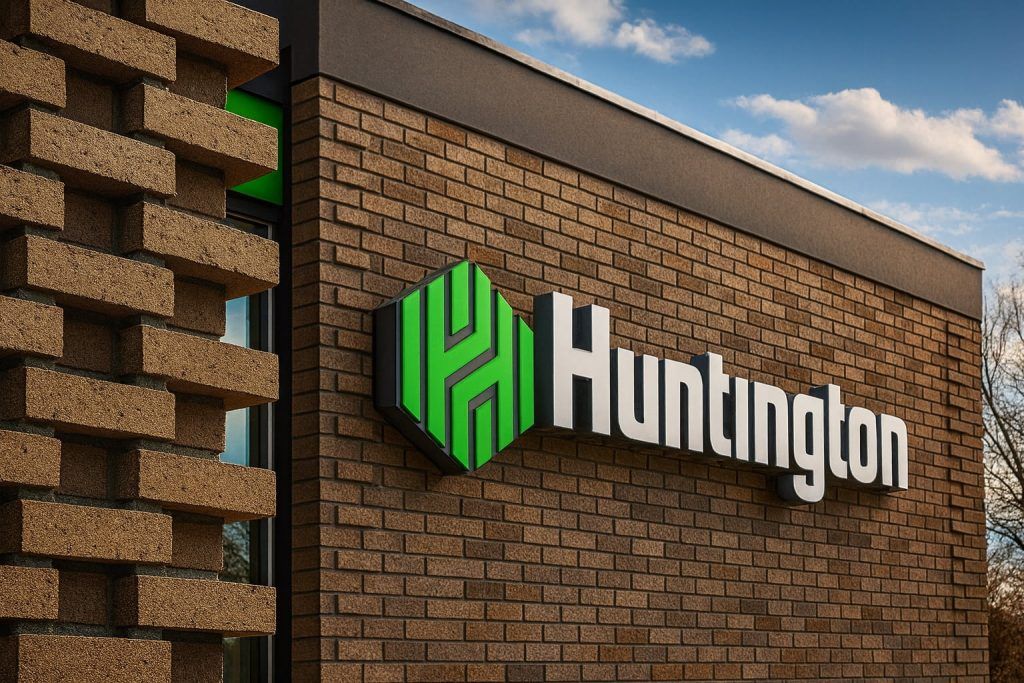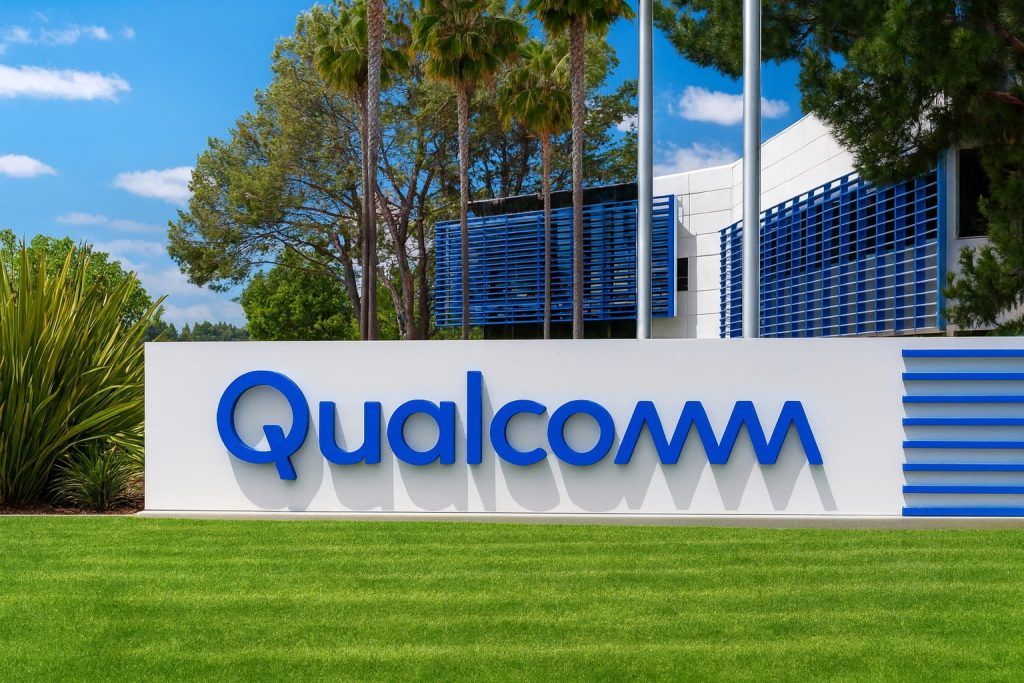- Vanguard’s tech-focused ETF is on fire: The Vanguard Information Technology ETF (NYSE: VGT) has surged roughly 50% in just six months, recently hitting all-time highs around $774 per share [1] [2]. A booming tech rally – fueled by artificial intelligence (AI) and Big Tech earnings – has propelled the fund sharply higher in 2025.
- Big Tech dominates its portfolio: VGT holds 314 tech stocks, but just three giants – Nvidia, Apple, and Microsoft – make up ~43–44% of the fund’s weight [3] [4]. These mega-cap leaders have soared in 2025 (Nvidia +40% year-to-date, Microsoft +25%, Apple +10%) amid red-hot AI demand and resilient consumer tech spending [5]. Their outsized gains have powered both VGT and the broader market rally.
- AI boom drives growth (with more ahead): Explosive demand for AI-related hardware (chips, cloud services, etc.) has lifted VGT’s holdings, and experts see the trend continuing. The fund’s top stocks are benefiting as businesses “load up” on servers, chips and software for AI – a tailwind that could persist for the foreseeable future [6]. Wall Street analysts remain bullish on these names: for example, Nvidia and Microsoft each carry “Strong Buy” ratings, with consensus 12-month targets ~15–20% above current levels [7].
- High rewards, high risks: Investors should note VGT’s high valuation and volatility. After its massive run-up, the average price/earnings ratio ~41 (vs ~25 for the S&P 500) [8] – signaling an expensive fund that could be vulnerable if growth expectations falter. And as a pure tech fund, it can swing sharply: in 2022’s downturn, VGT plunged over 30% (when the S&P 500 fell 19%) [9]. In other words, it tends to drop harder in bear markets – the flip side of its outsized gains in tech-led rallies. Diversification beyond tech remains important to manage risk [10].
- Vanguard doubles down on AI innovation: Beyond investing in AI-driven companies, Vanguard Group itself is embracing AI to enhance its business. The $11 trillion asset manager has “dozens of AI projects underway” and even a company AI Academy training employees in new AI tools [11] [12]. Vanguard’s tech leaders report that AI initiatives have already delivered roughly $500 million in value (through cost savings, efficiency gains, risk reduction, etc.) [13]. As Vanguard’s CIO Nitin Tandon puts it, advanced AI is “an invisible hand that elevates every facet of our client experience” by handling routine analysis and freeing experts to focus on investors [14].
Tech Titans Power a 50% Surge in Vanguard’s Flagship Tech Fund
Vanguard Information Technology ETF (VGT) – the investing giant’s tech sector index fund – has been on a remarkable tear, skyrocketing by about 50% in the past six months alone [15]. The ETF recently notched record highs around $774 per share [16], reflecting a dramatic rebound in market sentiment toward technology stocks this year. The “unstoppable, high-powered” rally in this fund is largely thanks to its heavy exposure to Big Tech’s brightest stars and AI winners.
Despite holding hundreds of stocks, VGT’s fortunes are tied closely to a few behemoths. The fund tracks a broad tech index (the MSCI US IMI Tech 25/50), but its top positions are familiar mega-cap names. In fact, Nvidia, Apple, and Microsoft together account for just over 43% of VGT’s total portfolio [17]. By design, the ETF is market-cap weighted, so the largest companies have the biggest influence. And lately those companies have been exceptionally strong – essentially carrying the fund on their shoulders.
All three of VGT’s top holdings have seen stellar performance in 2025, driven by blockbuster earnings and insatiable demand for AI-related products. Chipmaker Nvidia (NVDA) – now VGT’s #1 holding at ~17% – has emerged as the “arms dealer” of the AI boom, selling the advanced GPUs needed to train AI models. Its stock has skyrocketed (about +40% year-to-date) amid “booming AI” demand [18]. Microsoft (MSFT) and Apple (AAPL), each comprising roughly 13% of the fund, are also near all-time highs. Microsoft is up ~25% in 2025 [19], powered by growth in its Azure cloud and AI offerings (and optimism for its partnership with OpenAI), while Apple’s stock has gained a more modest ~10% [20] on continued iPhone sales strength and new product launches. These tech titans’ gains have supercharged VGT’s return – as TechStock² notes, mega-cap tech has “been on fire” this year, powering much of the market’s upside [21].
Crucially, VGT isn’t a one-trick pony holding only three stocks – it owns over 300 tech names across industries from semiconductors to software to IT services. This includes secondary players riding the tech rally (from old-guard firms like Oracle and Cisco to up-and-comers in fintech, e-commerce, and cloud computing). That breadth gives investors exposure to a wide swath of the tech sector’s growth. However, the fund’s concentration in a few giants means those giants’ fate heavily influences overall performance. Lately that’s been a boon, as Big Tech vastly outperformed. But it also means VGT’s fortunes are intertwined with a handful of companies – a key point for investors to remember.
AI Boom Drives Big Gains – and Could Keep Fueling Growth
One of the main reasons VGT has trounced the broader market this year is the explosive boom in all things AI. The fund’s success is essentially a bet on the AI revolution, given how many of its top holdings are leaders in artificial intelligence hardware and software. Tech companies are seeing surging demand for AI-related products and services in 2025, and that wave has lifted their stock prices considerably. For instance, businesses worldwide are “loading up on servers, storage, chips, and other IT infrastructure” to support AI development, according to a Motley Fool analysis [22]. Nvidia’s GPUs, for example, are in short supply as cloud providers and enterprises race to build AI capabilities – which helped Nvidia post record revenues and sent its stock soaring. Similarly, Microsoft has invested heavily in AI (from its Azure supercomputer deals to its stake in OpenAI), positioning itself to capture the enterprise AI services market. Apple, while more hardware-focused, is also incorporating AI features and benefits from overall tech optimism.
The good news for investors is that this AI tailwind appears far from finished. Many analysts believe we are still in the early innings of an AI-driven investment cycle that could play out over years. As the Motley Fool noted, the trends boosting VGT’s holdings “could continue for the foreseeable future” as AI adoption accelerates [23]. In practice, that means the stocks inside VGT may have more room to run. Wall Street’s outlook on the fund’s biggest positions remains very upbeat.
For example, Microsoft’s stock – already near a record high above $500 – is still viewed as a buy by the vast majority of analysts, thanks to its AI and cloud momentum. 32 out of 34 analysts covering Microsoft rate it a “Buy,” and the consensus 12-month price target is around $618 (about 20% above today’s price) [24]. Other VGT components show similar optimism: Nvidia is universally loved (“Strong Buy”) with roughly 15–16% further upside projected, and even Apple, while a more mature company, carries a “Moderate Buy” rating as it continues to grow its ecosystem [25]. In short, expert forecasts suggest VGT’s top holdings could climb higher still in the next year, if earnings and AI-related growth come through as hoped.
Of course, a continued rally is not guaranteed – forecasts can prove overly rosy if the economy or tech spending falters. But it’s telling that despite huge gains already, the AI giants in VGT are still seen as having gas left in the tank. As long as corporate and consumer spending on tech stays strong – especially investments in AI infrastructure, cloud computing, and next-gen devices – VGT stands to benefit. The ETF effectively gives investors a way to ride the “AI boom” across the sector, without having to pick individual winners. That has made it an attractive choice for growth-oriented investors this year.
High Valuation and Volatility Are Key Caveats
Before investors pile into this soaring fund, it’s important to understand the risks lurking behind VGT’s stellar returns. Chief among them is valuation: after such a steep rise, VGT has become quite “expensive” relative to fundamentals. The Motley Fool’s analysis points out that the average stock in the fund now trades at about 41 times earnings, whereas the S&P 500’s average P/E is closer to 25 [26]. In other words, the market is pricing tech companies for high growth – perhaps perfection – leaving little margin for error. Paying such high multiples can lead to subpar returns if growth disappoints, and it makes the fund more vulnerable to a sharp correction [27]. If interest rates rise or hype around AI cools, richly valued tech stocks could see their prices drop swiftly. Investors in VGT must be comfortable with this elevated valuation risk.
Another consideration is volatility. VGT’s focused tech portfolio means it tends to swing more dramatically than the overall market – so both the highs and lows are magnified. We saw this dynamic in action during the last bear market: in 2022, the S&P 500 fell nearly 20%, but VGT plunged over 30% in that rough year [28]. When the market “crashes,” investors often flee risky growth stocks for safety, and funds like VGT can get hit disproportionately hard [29]. In other words, this ETF has a higher beta to market moves – great when things are bullish (as in 2023–2025), but painful in a downturn. The trade-off is clear: VGT can “vastly outperform” in strong years, but can also underperform (with worse losses) in weak years [30].
This is why financial advisors generally recommend using a fund like VGT as part of a broader, diversified portfolio, rather than the one fund you put all your money in. By its nature, VGT concentrates in one sector (technology). It provides no exposure to other areas like finance, healthcare, energy, etc. – so it won’t cushion falls if tech slumps while other sectors hold up. Vanguard’s own experts emphasize that while the Information Technology ETF can be a “great investment to hang on to” for long-term tech exposure, it “won’t diversify your portfolio outside of tech” [31]. Thus, investors who ride this tech wave also need some ballast (other funds or asset classes) to weather the storms.
Bottom line: VGT offers high-reward potential, but with higher risk. It’s shining in 2025 thanks to the tech boom, yet prudent investors should keep an eye on valuation metrics and maintain a diversified strategy. The fund’s ultra-low expense ratio (just 0.09% [32], typical of Vanguard) means you aren’t paying much to hold it – but you must be willing to stomach the ups and downs that come with a concentrated tech bet.
Vanguard’s Own Big Bet on AI – Beyond Just Investing
Interestingly, the AI revolution isn’t only benefiting Vanguard in the form of fund performance – it’s also reshaping how Vanguard runs its business. The company behind VGT, Vanguard Group, is one of the world’s largest asset managers (with around $11 trillion in assets under management) [33]. With its massive scale and focus on efficiency, Vanguard has been a pioneer of low-cost, index-based investing. Now, it’s increasingly turning to artificial intelligence to drive further efficiency and better client service inside the firm.
According to a recent MIT Sloan Management Review profile, Vanguard has “dozens of AI projects underway” across its operations [34]. These range from client service chatbots and advisor tools to internal process automation and investment analytics. Vanguard’s Chief Information Officer Nitin Tandon and Chief Data Analytics Officer Ryan Swann closely track the outcomes, and so far the payoff from AI is substantial: they estimate roughly $500 million in value has been delivered to Vanguard’s business through AI initiatives to date [35]. That value comes from various “buckets” – such as cost avoidance, operational efficiency, risk reduction, and enhanced value for clients – showing that AI isn’t just a buzzword for Vanguard, but a real source of savings and improvement.
Notably, *Vanguard is implementing AI in a very human-centric way. The firm sees AI as a tool to augment its employees (“crew”) rather than replace them [36]. In fact, Vanguard launched an internal “AI Academy” to upskill its workforce on artificial intelligence. So far, about 50% of Vanguard’s employees have completed AI training programs to learn how to leverage these new technologies in their roles [37]. This broad-based training effort underscores how seriously Vanguard is embracing the AI era at every level of the company.
Vanguard’s CEO Salim Ramji (appointed in 2024) is a vocal AI proponent as well [38]. Under his leadership, Vanguard migrated most of its tech infrastructure to the cloud – laying the foundation to deploy AI at scale. Ramji and his tech chiefs describe a vision where advanced AI becomes “an invisible hand that elevates every facet of our client experience” [39]. By automating routine analyses and crunching vast datasets behind the scenes, AI can free up human experts (financial advisors, client reps, portfolio managers) to focus on higher-value work and personalized advice [40]. In practice, Vanguard has rolled out tools like “Crew Assist” (a generative AI helper for call center staff to quickly retrieve answers from internal knowledge) [41], and AI-driven summaries that help financial advisors tailor insights to clients’ needs [42]. It’s also experimenting with AI in investment research – for instance, using natural language processing on earnings call transcripts to predict dividend cuts more effectively [43].
All these efforts illustrate that Vanguard isn’t content just to invest in tech – it wants to be a tech-enabled leader in finance. The same forces making VGT’s portfolio companies thrive (AI and data analytics) are being harnessed inside Vanguard to improve how the company serves 50+ million investors. For the public investing in Vanguard’s funds, this hopefully means even lower costs and better service over time, as AI helps trim inefficiencies. It’s a reminder that the AI boom is multifaceted: it’s creating winners in the stock market, and it’s transforming businesses behind the scenes – Vanguard included – in ways that can enhance long-term value for shareholders and clients alike.
Outlook: Balancing Excitement with Caution
There’s no doubt that Vanguard’s Information Technology ETF has delivered extraordinary gains in the recent past. Its performance epitomizes the revival of tech stocks and the promise of AI in driving economic growth. Going forward, the prospects for VGT remain closely tied to the tech sector’s trajectory. If the AI revolution continues to translate into strong earnings for companies like Nvidia, Microsoft, Apple, and others in the fund, VGT could keep climbing. The sheer scale of opportunities in AI – from cloud computing and semiconductor demand to new consumer applications – provides a runway that might justify those high valuations for the leaders.
However, investors should approach this high-flying fund with eyes open. Periods of breather or pullback are to be expected after such a rapid ascent. Any sign of AI hype overheating or major tech growth stumbling (due to regulation, competition, or macroeconomic factors) could spur a correction. The coming year will be telling: many VGT holdings face crucial product launches and competitive battles in AI and beyond. Additionally, with interest rates elevated, richly valued tech stocks could react sensitively to changes in the economic outlook or Fed policy.
For investors who believe in tech’s long-term future, Vanguard’s low-cost tech ETF remains a compelling way to get broad exposure to the sector’s biggest winners. It offers a convenient one-click investment in the innovation driving the modern economy – from AI and cloud to smartphones and software. Just remember that with high growth comes high volatility. As one market adage goes, “don’t confuse a bull market with genius.” VGT’s 50% surge is impressive, but largely a product of a favorable market wave. Prudent investors will enjoy the ride but also prepare for bumps, ensuring their overall portfolio can withstand a tech downturn.
In summary: Vanguard’s tech fund is riding an unprecedented AI-fueled boom, and the momentum could continue into 2026 given optimistic forecasts for its top stocks. Yet it’s crucial to balance the excitement with disciplined risk management. By coupling a powerhouse fund like VGT with diversification and a long-term perspective, investors can participate in the upside of the tech revolution while staying prepared for whatever twists the market may bring. As Vanguard’s own philosophy underscores, innovation and low costs can unlock great value – but patience and prudence are key to reaping the rewards.
Sources: The Motley Fool [44] [45] [46]; Nasdaq/Yahoo Finance [47]; TechStock² (ts2.tech) [48] [49]; MIT Sloan Management Review [50] [51]; Investing.com [52].
References
1. www.nasdaq.com, 2. www.investing.com, 3. www.sharewise.com, 4. www.nasdaq.com, 5. ts2.tech, 6. www.nasdaq.com, 7. ts2.tech, 8. www.nasdaq.com, 9. www.nasdaq.com, 10. www.nasdaq.com, 11. sloanreview.mit.edu, 12. sloanreview.mit.edu, 13. sloanreview.mit.edu, 14. sloanreview.mit.edu, 15. www.nasdaq.com, 16. www.investing.com, 17. www.sharewise.com, 18. ts2.tech, 19. ts2.tech, 20. ts2.tech, 21. ts2.tech, 22. www.nasdaq.com, 23. www.nasdaq.com, 24. ts2.tech, 25. ts2.tech, 26. www.nasdaq.com, 27. www.nasdaq.com, 28. www.nasdaq.com, 29. www.nasdaq.com, 30. www.nasdaq.com, 31. www.nasdaq.com, 32. www.nasdaq.com, 33. sloanreview.mit.edu, 34. sloanreview.mit.edu, 35. sloanreview.mit.edu, 36. sloanreview.mit.edu, 37. sloanreview.mit.edu, 38. sloanreview.mit.edu, 39. sloanreview.mit.edu, 40. sloanreview.mit.edu, 41. sloanreview.mit.edu, 42. sloanreview.mit.edu, 43. sloanreview.mit.edu, 44. www.nasdaq.com, 45. www.nasdaq.com, 46. www.nasdaq.com, 47. www.nasdaq.com, 48. ts2.tech, 49. ts2.tech, 50. sloanreview.mit.edu, 51. sloanreview.mit.edu, 52. www.investing.com







